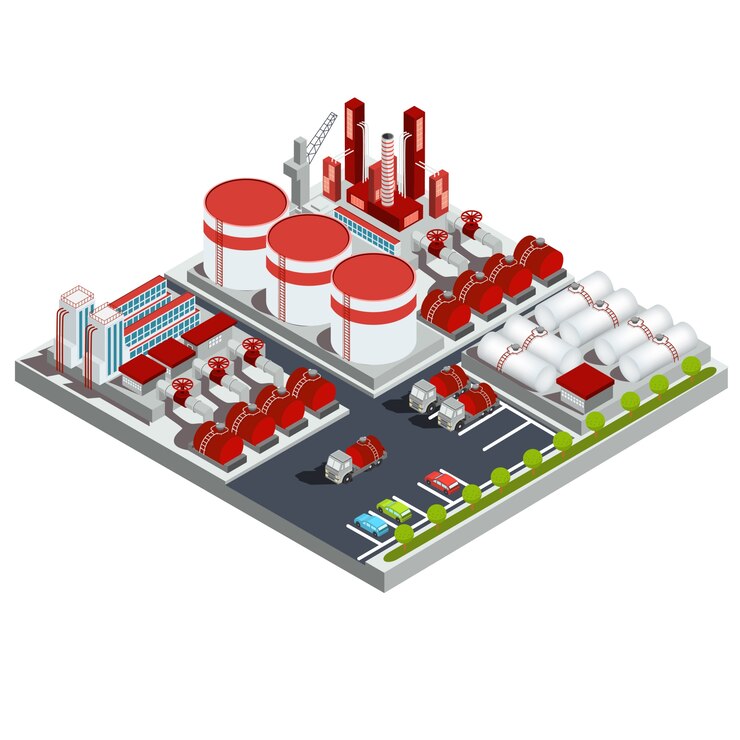
The oil and gasoline refinery enterprise is understood for its complicated construction initiatives that call for precision, efficiency, and strict adherence to safety regulations. One of the most transformative advancements in this quarter is Building Information Modeling (BIM). The BIM era has revolutionized how refinery initiatives are designed, deliberated, and completed using virtual representations of physical and purposeful characteristics. It enhances collaboration, reduces errors, and improves basic undertaking efficiency.

Understanding BIM in Oil and Gas Refinery Construction
BIM is a digital modeling technique that integrates various aspects of refinery production, inclusive of architecture, engineering, and mechanical systems, right into a unified version. Unlike traditional 2D drawings, BIM affords a comprehensive 3D visualization, allowing undertaking stakeholders to foresee challenges before actual creation starts. This proactive method minimizes high-priced mistakes and ensures that initiatives adhere to industry requirements.
One of the full-size benefits of BIM in refinery tasks is its capability to integrate drawing offerings seamlessly. Shop drawing services as special publications for fabrication, ensuring that substances and components fit together perfectly. By incorporating those drawings into BIM, engineers and contractors can become aware of capability clashes, make necessary adjustments, and optimize creation workflows.
Additionally, BIM improves assignment coordination and performance by way of integrating real-time information. This reduces the probability of design conflicts, supporting teams to locate and clear up issues early inside the construction segment. By doing so, refineries can avoid unnecessary delays and cost overruns.
Enhanced Collaboration and Communication
In big-scale refinery creation tasks, a couple of disciplines, which include civil, mechanical, and electric engineering teams, have to work together. Traditional methods of conversation often result in misunderstandings and discrepancies in layout execution. However, BIM fosters better collaboration by offering a centralized virtual platform wherein all stakeholders can get admission to, modify, and percentage mission facts in actual time.
The integration of 2D drafting services into BIM additionally plays an essential role in making sure that production teams have correct and updated documentation. While BIM excels in 3-D modeling, 2D drafts stay crucial for generating phase views, elevations, and specific schematics. These drawings complement the BIM model, supplying a properly rounded technique for mission execution.
By utilizing BIM, oil and fuel organizations can make certain that each undertaking member, from architects to on-site online workers, stays aligned with task dreams. This minimizes miscommunication and enables maintaining venture consistency and accuracy from start to finish.
Improved Safety and Risk Mitigation
Safety is a top priority in the oil and gas refinery industry, as initiatives often contain hazardous materials, excessive-strain structures, and extreme temperatures. BIM contributes considerably to risk mitigation by allowing thorough safety planning earlier.
Through BIM simulations, mission managers can discover potential hazards and put in place preventive measures. This consists of mapping out emergency exits, making sure proper ventilation in constrained areas, and assessing structural integrity. Additionally, incorporating store drawing services into BIM lets teams make certain that prefabricated additives meet protection standards earlier than they are set up.
Moreover, BIM enables screening regulatory compliance by integrating nearby and global protection codes into the design procedure. By doing so, refinery tasks can keep away from penalties, project shutdowns, and legal disputes that could arise from protection violations.
Cost and Time Efficiency in Refinery Projects
One of the largest challenges in refinery production is handling budgets and meeting cut-off dates. Traditional construction techniques regularly result in unexpected charges and timetable delays due to unforeseen layout changes and cloth wastage. However, BIM extensively enhances cost and time efficiency by permitting correct venture-making plans.
By using BIM, task managers can generate specific value estimates and assume cloth requirements earlier. This reduces the likelihood of overordering or walking out of important materials. Additionally, BIM’s ability to integrate 2D drafting services ensures that all challenge additives are designed with precision, lowering transform and fabric waste.
Prefabrication is another value-saving advantage of BIM. By making use of BIM-generated store drawings, contractors can manufacture additives off-site online, minimizing on-site labor costs and decreasing installation time. This streamlined workflow lets refinery tasks fulfill cut-off dates without compromising first-rate.
The Future of BIM in the Oil and Gas Refinery Industry
As the era continues to adapt, the position of BIM within the oil and fuel refinery enterprise is anticipated to extend in addition. The integration of artificial intelligence (AI), cloud computing, and the Internet of Things (IoT) into BIM will decorate its abilities, allowing for actual-time monitoring, predictive upkeep, and automatic creation tactics.
Future advancements in 2D drafting services may also complement BIM, making sure that production documentation stays unique and adaptable to virtual innovations. By embracing these technologies, refinery tasks can be preserved to improve performance, protection, and sustainability.
Conclusion
BIM has emerged as an indispensable tool in oil and gasoline refinery production tasks, revolutionizing the enterprise with more desirable design accuracy, progressed collaboration, and advanced danger control. The integration of keep drawing services and 2D drafting offerings within BIM ensures that refinery tasks are executed with precision, performance, and compliance with protection guidelines.
As the enterprise continues to adopt digital solutions, BIM will play a principal role in shaping the destiny of refinery production. By leveraging this era, oil and gas businesses can optimize resources, lessen project fees, and reap sustainable development desires whilst keeping the very best standards of best and protection.




Leave a Reply